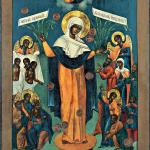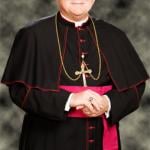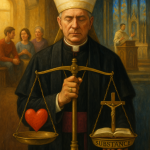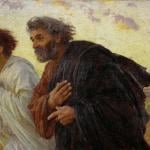Vatican City, Sep 3, 2016 / 07:33 am (CNA/EWTN News).- Ahead of his meeting with volunteers Saturday, Pope Francis decided to pop in for the inauguration of a new statue of Our Lady of Aparecida in the Vatican Gardens. The fact that the statue has been placed I the gardens is significant, since have not received a new piece of art since 2010. “I'm glad that the image of Our Lady of Aparecida is in the Gardens,” Pope Francis said at the unveiling Sept. 3. “In 2013 I had promised to return next year: I do not know if it will be possible, but at least I will have her very close, here.” The statue, designed by a Brazilian artist, is a joint initiative of the Archdiocese of Aparecida and the Embassy of Brazil to the Holy See. Cast in bronze, it depicts a boat with three fishermen holding a full fishing net, and frames a replica statue of Our Lady of Aparecida. It is traditionally held that the original statue of Our Lady of Aparecida, which is housed in the Basilica of the National Shrine of Our Lady of Aparecida in São Paulo, Brazil, was found in 1717 by three fishermen who, after praying to Our Lady, miraculously caught many fish after a morning of no catch. In his brief address, Pope Francis asked for prayers that Our Lady would “cherish throughout Brazil, the entire Brazilian people at this sad time,” referring to the various tragedies and poverties experienced throughout the world. He asked that she would “guard the poorest, the discarded, the abandoned elderly, street children,” saving God's people with “social justice and the love of Jesus Christ, his Son.” The Pope concluded his message by asking Our Lady to bless all Brazilian people, highlighting how the statue of Our Lady of Aparecida was originally found by the working poor, and today is found by everyone, “especially those who need work, education, those who are deprived of dignity.” The Holy Father then led those present in singing the “song of Aparecida” and gave his blessing. Pope Francis visited the Shrine of Our Lady of Aparecida during World Youth Day in Brazil July 24, 2013, saying he had come to the Shrine to “place at her feet the life of the people of Latin America.” While still Cardinal Bergoglio, Pope Francis helped draft and edit the Concluding Document of the Fifth General Conference of the Bishops of Latin America and the Caribbean, held in Aparecida May 13-31, 2007. Commonly called the “Aparecida Document,” it contains the Latin American bishops' advice for pastoral and missionary work in the Church in Latin America in the 21st century, and is frequently cited as an example for the origin of Pope Francis' theology. Read more















